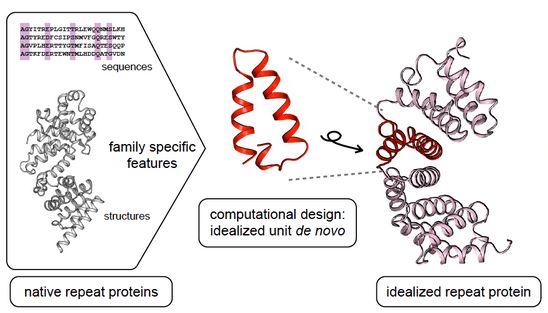Creative Biolabs offers customers services for protein intrinsic property modulation by computational design.
The creation of novel proteins with desired functions is a great challenge for protein engineering. We have applied computational algorithms that can search through large numbers of protein scaffolds for protein active site recapitulation, allowing rapid evaluation and testing of protein design methodologies. These methods can be directly applied to design new proteins, and provide a powerful in silico test to enhance computational protein engineering.

Figure 1. The general computational protein engineering approach. (Parmeggiani, F. et al., 2014)
Folding behaviors are the intrinsic properties of proteins, and there are roughly two types, as shown by protein folding experiments: the two-state kinetics and the multi-state kinetics. The determining factors for the folding type of a protein is still largely unclear, although the two types of protein folding kinetics have been known since long. A comparative study based on a collection of 43 two-state and 42 multi-state folders was performed, at different levels of proteins' intrinsic properties from the simplest sequence length to native structure topology. The protein's amino acids composition and the long-range interaction-based topological complexity were shown to determine the folding kinetics type, rather than secondary structure contents.
It is believed that all proteins are potentially allosteric, which is a consequence of re-distributions of protein conformational ensembles. The binding site shape may not show a concerted second-site change and enzyme kinetics may not reflect an allosteric transition for the supposedly non-allosteric proteins. However, a population shift can be initiated by appropriate ligands, point mutations, or external conditions.
Computationally, the 20 amino acids can be presented by a novel cylindrical representation, whereby the residue types are put in a circle and sequence positions along the z axis. In this way, the visualization of both the composition and sequence order of amino acids at is made possible at the same time. Using this model, the intrinsic properties of protein sequences are described by ten numerical descriptors and one weighted numerical descriptor. The model has been applied to conduct similarity/dissimilarity analysis of nine ND5 proteins. These numerical descriptors are proved to be more effective than several classical numerical matrices. We will work on the modulation of the intrinsic properties of your proteins with carefully chosen computational methods, and take into consideration all other factors as well.
Reference
All listed services and products are For Research Use Only. Do Not use in any diagnostic or therapeutic applications.